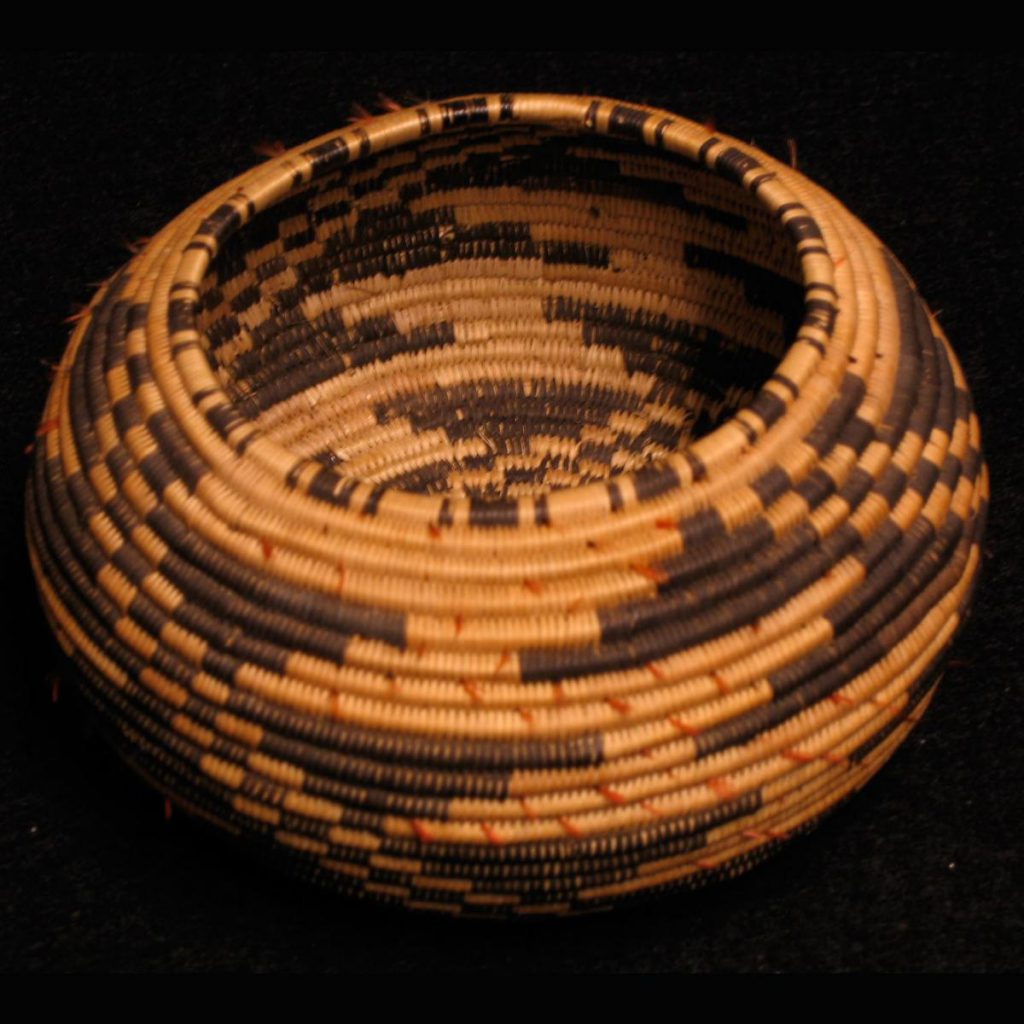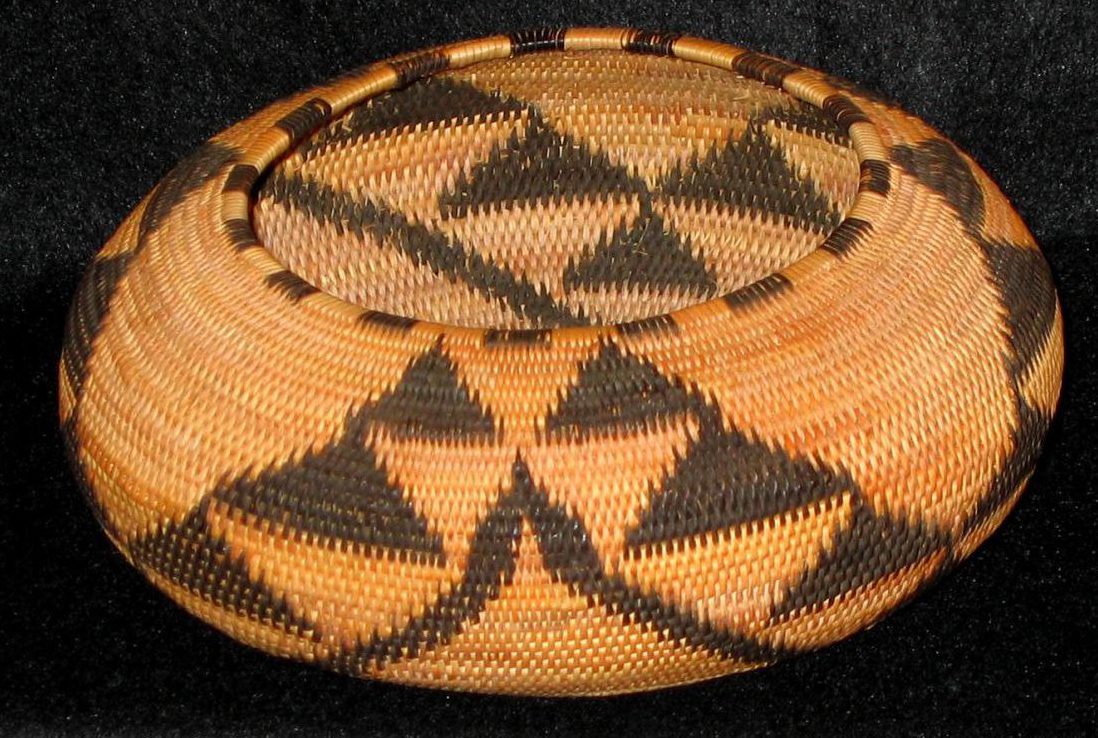The lands of the Pomo spread across modern-day Sonoma, Mendocino, and Lake counties. The Pomo lack access to clay for pottery and so baskets are essential.
Pomo baskets, whether decorative or functional, are a complicated mix of artistry and engineering. A basket can take years to complete. Materials like feathers, roots, bark and other plant materials must be collected and then cured before weaving can begin. The intricate and precise twining and coiling requires patience and stamina.
Annie Burke, a Pomo Indian, is born in 1876 and lives in the Cloverdale area. She is well-known for her basket weaving skills in a community that has a reputation for its many skilled weavers.
Pomo custom dictates that when a basket maker dies, their baskets are buried with them or burned. To preserve the basket-weaving tradition, Annie begs her daughter Elsie Allen not to destroy her baskets upon her death.

Elsie, born in 1899, uses her mother’s baskets to form the basis of the Elsie Allen Basket Collection to demonstrate the significance of their culture to others.
After raising her family, at 62 Elsie begins devoting more time to basket wearing. she publishes Pomo Basketry: a Supreme Art for the Weaver, in 1972, which brought widespread recognition to her tribe.

Annie, along with her daughter Elsie and Edna Sloan Guerrero, also form the Pomo Mother’s Club, later renamed the Pomo Indian Women’s Club. The club’s mission is to support the community through education and fundraising and to counter anti-Indian discrimination in California. The Club’s basketry exhibits and demonstrations are instrumental in educating others about the Pomo people.
Annie Burke dies in 1962; Elsie in 1990. Elsie’s daughter, Genevieve Allen Aguilar, maintains the family basket collection.


